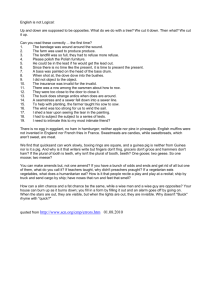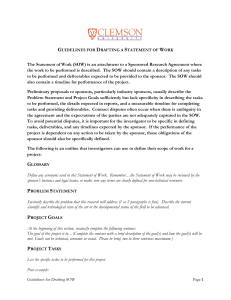Title III Technical Proposal Outline - Non-Competitive
advertisement
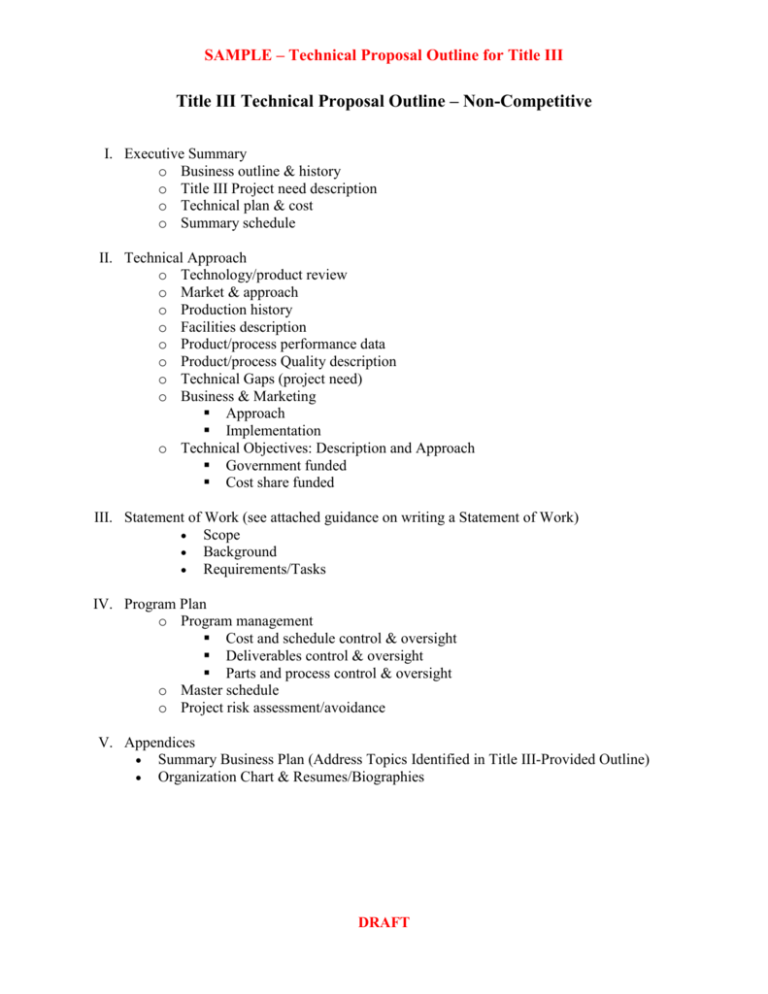
SAMPLE – Technical Proposal Outline for Title III Title III Technical Proposal Outline – Non-Competitive I. Executive Summary o Business outline & history o Title III Project need description o Technical plan & cost o Summary schedule II. Technical Approach o Technology/product review o Market & approach o Production history o Facilities description o Product/process performance data o Product/process Quality description o Technical Gaps (project need) o Business & Marketing Approach Implementation o Technical Objectives: Description and Approach Government funded Cost share funded III. Statement of Work (see attached guidance on writing a Statement of Work) Scope Background Requirements/Tasks IV. Program Plan o Program management Cost and schedule control & oversight Deliverables control & oversight Parts and process control & oversight o Master schedule o Project risk assessment/avoidance V. Appendices Summary Business Plan (Address Topics Identified in Title III-Provided Outline) Organization Chart & Resumes/Biographies DRAFT SAMPLE – Technical Proposal Outline for Title III Statement of Objectives/Statement of Work Guidance Statement of Objectives (SOO): The SOO is used by the recipient/contractor, along with other information and instructions in the Request for Proposal (RFP), to develop the contract work breakdown structure, Statement of Work (SOW), and other documents supporting and defining the recipient/contractor’s proposed effort. The SOO captures the top level objectives of a solicitation and allows the recipient/contractor complete freedom in the structure and definition of SOW tasks as they apply to the proposed approach. Statement of Work (SOW): The SOW should specify in clear, understandable terms, the work to be performed by a recipient/contractor. The typical format for the SOW is as follows: SOW Section 1 2 3 Title SCOPE BACKGROUND REQUIREMENTS/TASKS Deviations from the standard format may be made by the recipient/contractor when necessary to accommodate overriding program needs. Scope: This Section includes a brief statement of what the SOW should cover. The scope paragraph defines the breadth and limitations of the work to be done. The following items should not be included in the "Scope" Section: directions to perform work tasks; specification of data requirements; description of deliverable products. Background: Background information should be limited to that information needed to acquaint the reader with the basic project requirement/objectives. Requirements/Tasks: This section should specify requirements/tasks clearly to permit the government and the recipient/contractor to estimate the probable cost and the recipient/contractor to determine the levels of expertise, manpower, and other resources needed to accomplish the tasks; avoid directing how tasks are to be performed but only state what results are required. The arrangement of technical tasks and subtasks within the Requirements section will be dictated by program requirements. If a Work Breakdown Structure (WBS) is being used in the program, tasks should be arranged in accordance with that WBS. It may be helpful to have a general program management task to orient the planning and use of the subsequent subtasks. Paragraph Numbering and Identification. Each paragraph and subparagraph should be numbered consecutively within each SOW Section using a period to separate the number representing each sublevel. Paragraph numbering should be limited to the third sublevel, if possible, as shown in the following example for SOW Section 3: Requirement 3 1st Sublevel 3.1 2nd Sublevel 3.1.1 DRAFT SAMPLE – Technical Proposal Outline for Title III 3rd Sublevel 3.1.1.1 Paragraph breakdowns should be kept to that level necessary to clearly define required recipient/contractor tasks. Only one task should be provided in a numbered paragraph or sub paragraph to facilitate costing, referencing and tailoring of tasks. Each paragraph and sub-paragraph should be titled. Language Style. SOW requirements should be written in language understandable to all potential program participants. Requirements should be stated explicitly in a topical, logical, chronological, or similarly structured order, avoiding words which allow for multiple interpretations. Use technical language sparingly with simple wording predominating in concise sentences. Use "shall" whenever a provision is mandatory. “Will” expresses a declaration of purpose or intent; for example, "The Government will review all recommendations and provide direction within thirty calendar days." Use active rather than passive voice; for example, "The recipient/contractor shall establish a program." not "A program shall be established by the recipient/contractor.” Spell out acronyms and abbreviations the first time and put the abbreviated version in parentheses after the spelled-out phrases. This will define them for each subsequent use. Use verbs that identify work and performance task requirements and answer the explicit question: "What are the work requirements?" Work Breakdown Structure (WBS). A WBS may be used in developing the SOW. A WBS provides the framework for a disciplined approach of structuring and defining the total project or program. It is a product-oriented family tree composed tasks/items which make up the project, and provides the basis for progress reporting, performance and engineering evaluations, and financial data reporting. When preparing the SOW a complete application of a WBS may not be necessary in all programs, however, the underlying philosophy and structured approach can and should be applied. Use of a WBS during SOW development facilitates a logical arrangement of the SOW elements and provides a convenient check-list to trace all necessary elements of the program and ensure that they are addressed in the SOW. The WBS may be tailored to the minimum level required to manage program risk. DRAFT
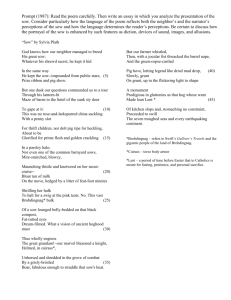
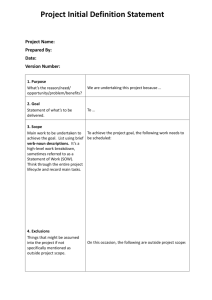
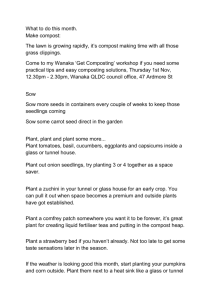
![Statement of Work [SOW]](http://s3.studylib.net/store/data/007821464_2-94d0a9ea0a77daab9f4e7cb62ab8fc19-300x300.png)
